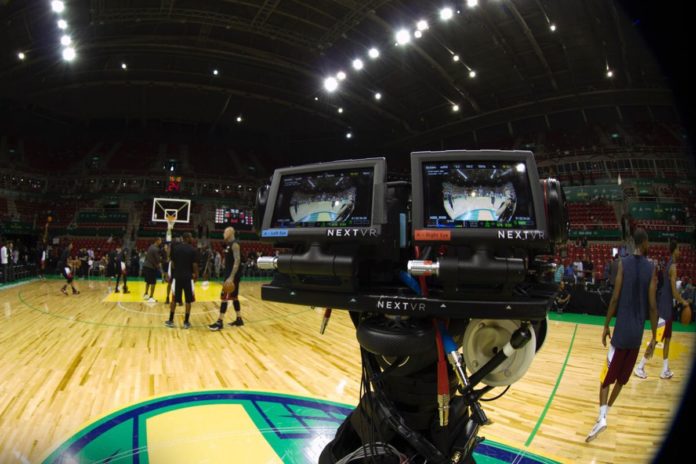We don’t really think about the camera work in sports, even though we tend to revere works like the NFL films collection. Sports can be dramatic and heart wrenching, exhibiting the highest we are capable of and the lowest we can fall. The videographer who shows up hours before the game begins is the essential cog that gives us, the fans, access to those dramatic moments.
VR has introduced some brilliant possibilities to the world of sports, some already live and viewable, with access to the action from the best seats in the arena. So, what would we add to our wishlist for the future?
Give Us Atmosphere

One element that seems very compelling is the ability to move around the stadium. Viewers can switch camera angles to various spots around the arena and get a more intimate view of the crowd. Now imagine walking through tailgating parties outside the big championship game or freeway series. Imagine getting a more intimate view of the stadium: its gift shops and snacks and everyone just walking around.
We get these throwaway shots a lot in sports, and we often don’t consider the atmosphere they build. We get the sense the game is populated, that people are excited. Letting us stroll around would give casual fans a great way to feel the atmosphere. Perhaps a track camera around the bleachers of a baseball game, where viewers can follow in the wave. Combine it with innovative tech, like drones for a flying effect, for an experience that television can’t recreate.
Let Us Choose How to Analyze the Game
MLB uses AR to give fans statistics about the game and its players. Fans love to engage and debate about what if’s, or dissect plays. What if we could explore replays and highlights at will, and see the various possibilities for ourselves? What if we could follow only our favorite player and watch every move he makes during that game-making play?
The replay is a powerful tool in sports commentary because it allows the color commentator to clue the audience into what everyone on the field is thinking, second by second, through diagrams and various angles. That experience would become far more immersive if we were allowed to pause and re-arrange the action for a better view.
Coaches of amateur sports could use it as a valuable tool to show their players what the pros are doing, and why. Fans would get a different perspective of play, and could socialize if the platform connected to the Web. Carry those lively living room debates onto the Internet, with the ability to clip and post plays for a more informed discussion.
Give Us a Player’s Perspective
Perhaps the most powerful way to harness VR is to give us a player’s perspective. TV already tries to do this with innovative drone cameras and 360-degree views, but it often falls short of truly putting us in the player’s shoes.
The NFL’s idea to put cameras on every helmet initially emerged as a tool for coaching, but it could easily give fans greater access to the action. The player’s perspective is a technical challenge, but the payoff would be worth it.
[youtube https://www.youtube.com/watch?v=IN6dGWDzh7A&w=560&h=315]
The other trick to this is allowing for fans to experience this live, and without limiting range of motion. On the NBA app, you get a very limited view that you can rotate around to see the action. For true immersion, fans need to be able to look everywhere. The NBA tried some of this in the “Follow My Lead” documentary for the 2016 finals, which did allow for that full 360-degree motion.
Final Thoughts
Armchair debates cause a lot of groaning, but they are why we watch sports in groups. We love challenging each other’s favorite teams and that time spent is like a game in and of itself. VR offers fans more: more stats, more angles to view every play, more ways to get a sense of the excitement.
Right now, VR is in its infancy, and we’re exploring some of these concepts. The NBA’s program is ambitious, and we’re seeing more AR applications from professional leagues as well. VR has also changed coaching and will shape the future athlete.
However, VR presents one other intriguing problem: what if it’s better than being there? What if the VR experience in the next decade becomes preferable to attending because of some of these changes? How will the game, and the audience, change with technology?


